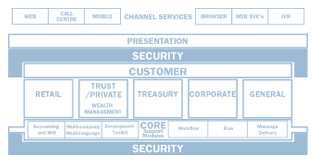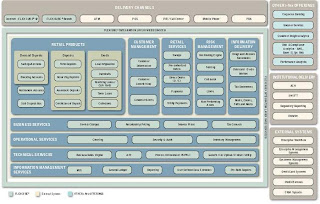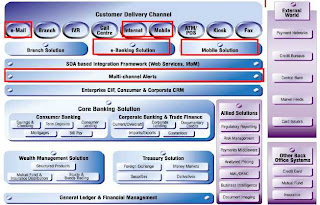There are many areas in Banking Operation that can be improved by using the right InformationSystem Solution. Actually automation in Banking requires a very comprehensive set of solution comparing to other industries. Transactional and non transactional system in banking need support from Information System.
Having this situation, one can be much helped if he can understand the solution components that are actually can be intergrated in a bank. Several Banking Enterprise Solution providers have provided their solution architecture for us so that we are able to see in high level how each solution is interlink one and anothers. In this discussion I quoted solution architecture that is provided by SAP, Infosys, Temenos and Oracle-iflex for our reference.
Diagram 2 : Infosys Solution Architecture


As can be seen, that in each solution architecture - we can see that there are three major sections for the banking operation automation i.e :
- Delivery Channel
- Customer Management
- Product Management
- Financial Accounting
- Decision Support System
In each section, an IT Managers then can map their current solution and see opportunities for automation improvement to support the overall business goal.






